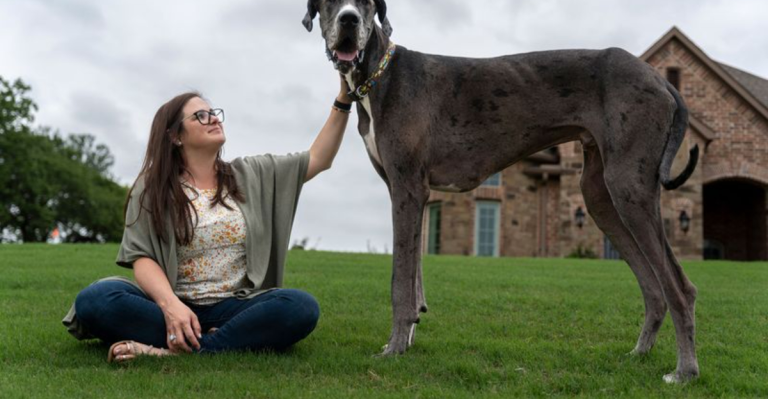15 Dog Breeds That Are More Likely To Experience Anxiety

Some dogs are chill no matter what—thunder? No problem. Vacuum? Bring it on. Then, there are the anxious ones. The pups who lose their minds when you leave the room or act like the mailman is their arch-nemesis. So, if your dog treats every little change like the end of the world, you’re not alone. Here are 15 of the ultimate overthinkers of the dog world.
Border Collie

Border Collies need constant engagement. Without mental challenges, they spiral into destructive anxiety. This breed is one of the most intelligent breeds, but intelligence comes with a cost—separation anxiety and compulsive behaviors like tail chasing can become unmanageable without structured activities.
Jack Russell Terrier

Energetic and always on the go, Russells crave stimulation. Left alone too long, they bark excessively, dig, and even self-harm. Furthermore, their hunting instincts make city life stressful, amplifying their nervous tendencies. Providing agility training can be the difference between calm and chaos.
Cocker Spaniel

Once a favorite of British royalty, Cocker Spaniels are emotionally attuned to their owners. This strong bond can backfire when left alone, which leads to separation distress. Their soft, floppy ears make them more responsive to sounds, sometimes amplifying fear responses to sudden noises.
Chihuahua

Weighing under six pounds yet carrying a world of worries, Chihuahuas are infamous for their nervous energy. They often tremble when anxious, a reaction tied to both their fast metabolism and high-strung temperament. Socializing them early can help reduce their exaggerated reactions to everyday life.
German Shepherd

German Shepherds thrive on companionship. Their protective instincts make them hyperaware of their surroundings, sometimes leading to paranoia-like anxiety. Without proper engagement, they may develop noise sensitivity, compulsive licking, or even defensive aggression when overly stressed.
Bichon Frise

Always cheerful yet deeply attached, Bichon Frises experiences separation distress if left alone too often. Originally bred as lap dogs, they seek constant human interaction. Providing interactive puzzle feeders and steady companionship can greatly reduce stress in this breed.
Labrador Retriever

Despite their happy-go-lucky reputation, Labradors are not immune to anxiety. Many Labradors exhibit compulsive chewing when stressed. Regular swimming, which taps into their natural retrieving instincts, has proven to be an excellent way to calm their nerves.
Italian Greyhound

Italian Greyhounds often display extreme nervousness. They detest loud environments and require gentle handling. Even minor disruptions in their routine can trigger trembling or destructive chewing. A stable home and soft-spoken training techniques are essential for their emotional well-being.
Dachshund

Curiosity and courage define Dachshunds, but these little explorers can be prone to anxiety if left unstimulated. Originally bred for burrowing, they crave security and can become stressed in chaotic settings. Plus, their stubborn streak can worsen anxiety-based behaviors like obsessive digging.
Shiba Inu

Shiba Inus often experiences anxiety in unfamiliar situations. Unlike most breeds, they have a unique vocalization known as the “Shiba scream,” which can be triggered by stress. Gradual exposure to new environments and controlled socialization can help ease their naturally wary nature.
Beagle

Beagles are nose-driven explorers with a loud voice. They are bred to follow scents, and when they’re bored, they don’t suffer in silence. They howl. Loudly. Hence, a bored Beagle will serenade the neighborhood unless given scent-tracking games or outdoor adventures to keep its mind engaged.
Akita

Akitas can develop severe stress in unfamiliar situations. Originally bred as guard dogs, they require structured socialization to prevent anxiety-related aggression. That’s why providing a calm environment with firm yet gentle leadership is essential for reassuring this noble breed.
Goldendoodle

This breed is a people-pleaser to the core. Goldendoodles thrive on human interaction, and when left alone, they develop “Velcro dog syndrome,” clinging to their owners at every opportunity. Encouraging independence through interactive toys and short alone-time intervals decreases this anxiety-driven clinginess.
Papillon

Papillons can easily become overstimulated. Their high energy levels require constant engagement, and without it, they resort to excessive barking or obsessive licking. Regular training exercises, coupled with mental stimulation, can prevent these small dogs from becoming overly anxious.
Havanese

This breed absolutely hates being left out. When left alone for too long, they can become restless, whining, pacing, or even shredding pillows in protest. To prevent this, it’s important to rotate interactive toys and make sure they get daily social interaction. By doing so, you’ll keep their playful spirit alive and thriving.





